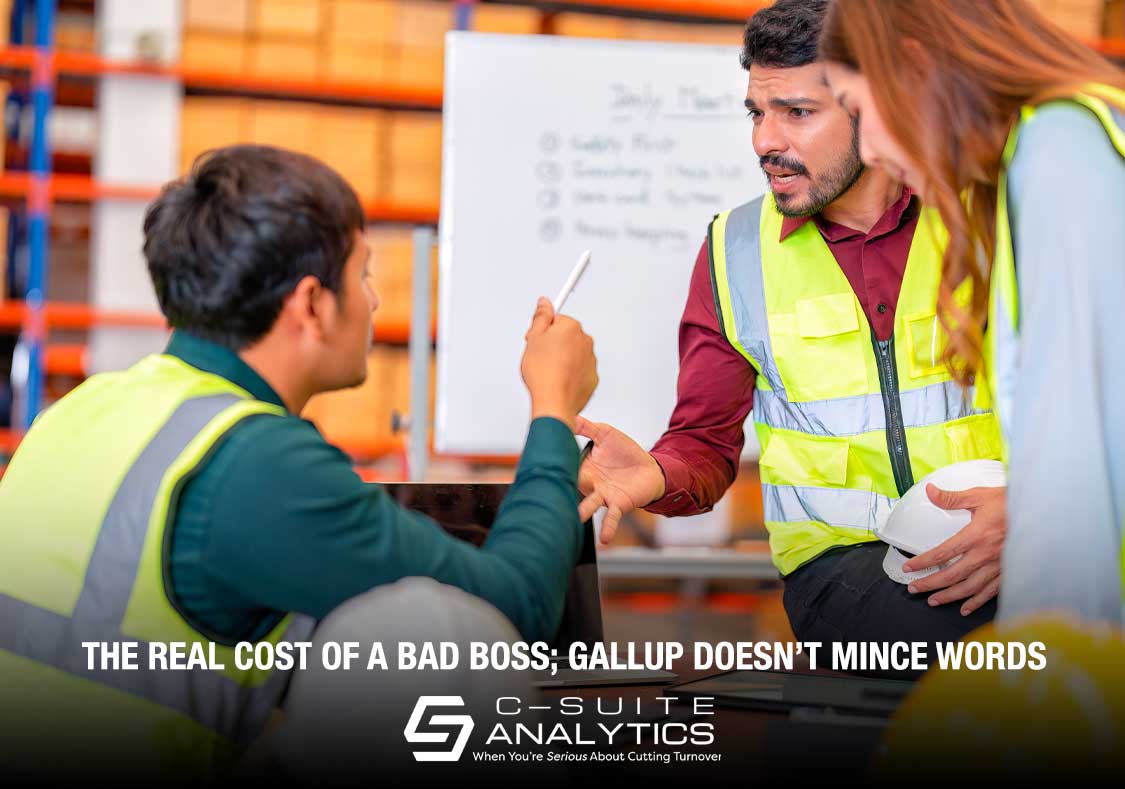Most hiring tools answer whether candidates can and will do the job, but not if they’ll stay. Learn how realistic job previews and motivational-fit interviews can improve retention from day one.
Yes or No: Do Engagement Surveys Cut Turnover?

Several weeks ago I published a report here titled “When Non-HR Executives Ask About Turnover…”, taking a few summary quotes from a book I authored named HR’s Greatest Challenge. Today I’m diving deeper into my research from that book to address the question: Do engagement surveys cut turnover?
It’s True that Higher Engagement Leads to Lower Turnover
Here’s what’s true: Higher engagement leads to lower turnover. But conducting more surveys does not necessarily lead to higher employee engagement. The below quotes and their explanations tell why this is so.
Quote #1: Engagement surveys give data but no solutions. Managers try to solve poor communications with town hall meetings and recognition with employee-of-the-month awards. Employees just want better bosses.
The Harvard Business Review just referenced a Gallup study telling us that 71% of those surveyed believe employee surveys help them understand their culture.[i] Similarly, a hospital HR executive told me last week that her engagement survey “provided so much interesting information”. When I then asked if that year-after-year data helped her cut turnover, she said “apparently not” as her turnover rates continue to climb.
The hard truth is that engagement surveys don’t even improve engagement, given that Gallup’s tracking since 2000 tells us engagement has stayed relatively flat.

—–
Further reading: Gallagher Reports #1 Workforce Priority is Still Turnover
—–
Engagement Benchmarks Can Lead to Complacency
Some say the best part of vendor-driven engagement surveys is they provide benchmarks so one can see how their company’s scores compare to others.
Quote #2: The problem with engagement benchmarks is we aim for one step above the middle. Beating the average can make us feel very, very good about 70 percent of our employees not giving their best.
But the reality is that the benchmark becomes the goal…so scoring one hair better than the benchmark represents success. The underlying assumption is that if other companies can’t earn higher scores, then we can’t either.
If you asked your executives if they’d be satisfied by being average on other key metrics like sales, service, or safety…or let’s change average to mediocre…they would of course say “no”. But for some of those executives, scoring average on engagement means they are paying enough because they connect engagement and retention to pay, so being average is very OK.
Connecting this thinking to retention, we tell our C-Suite Analytics’ clients that the only important metric is how their turnover compares against their own internal goals, with zero reference to anyone else’s turnover.
—–
Further reading: Exit Interviews – Autopsies or Toe Tags?
—–
Cutting to the Chase on Employee Retention
Quote #3: If you say you treat employees like customers, would you tell dissatisfied customers you have an action plan for improvement and then survey them again a full year later?
To get into the season, let’s talk turkey here. The common practice of reporting survey results to employees, telling them what improvements you will make, and then re-surveying a full year later to measure your success is just too little, too late. Raise your hand if you treat your customers like that. I didn’t think so.
One-Size-Fits-All Programs Don’t Give Employees What They Are Looking for to Stay
Quote #4: Employees stay for things they get uniquely from you. Identify this for each individual employee, leverage it, and you win.
Most employee surveys omit any reference to direct supervisors. Instead they are focused on broader topics like recognition, communication, and respect. The outcome is more one-size-fits-all employee programs. In fact, any survey that doesn’t provide data for each first-line supervisor has no value at all.
True confession, I use the same three joke lines when I speak at conferences and here’s a favorite:
When was the last time you heard a good worker say, “My boss treats me like dirt, but I’m holding on for employee appreciation week. I’ll get a balloon and a hot dog and I’ll feel great!”
The real joke is that this happens in companies every day. They receive their survey results and then appoint an employee committee, and often times that committee’s first-up assignment is how to improve recognition. The committee meets three times and then announces their plan:
- Employee of the month
- Employee of the year
- Employee appreciation week
- Give a backpack at 5 years of service
- Give a clock at 10 years of service
This plan won’t change next year’s survey score because what employees are asking for is that their manager tell them what they do well.
One-Size-Fits-All Programs for Engagment are Hawaiian Shirt Days
Quote #5: My favorite part in the movie Office Space is when Lumberg introduces the two Bobs to his staff and then says with a flat face, “And remember, next Friday is Hawaiian shirt day.”
No matter what time this cult movie starts, I watch Office Space till the end when the building burns down…and I’ve watched it at least fifteen times. The irony of this scene is the executive pulls together a company meeting to introduce consultants who are about to slice jobs and put people out of work, and he then closes the meeting with one of the worst-ever one-size-fits-all programs which is Hawaiian shirt day. He’s smug. Really funny.
The book referenced at the beginning, HR’s Greatest Challenge, made clear that employee retention solutions had to be one-on-one between each manager and each of her individual employees…rather than rely on one-size-fits-all programs based on employee survey results. But this concept became even more relevant, more crucial for retaining employees since COVID-19 when individual employee concerns became more personal, and less solvable by a company program. Relationships now matter even more.
And because of our ongoing workforce challenges, retaining our best workers has also never mattered more.
—–
Further reading: Change One Performance Meeting to a Stay Interview for Retention
—–
What Beats Engagement Surveys for Retention? Stay Interviews
Why are Stay Interviews the most successful tool for cutting turnover? Because Stay Interviews are delivered by humans one-on-one with immediate feedback. All leaders including first-line leaders ask just five SI questions. After asking each question those leaders listen for important answers, probe to learn their deeper meanings, and take notes to ensure all important points are preserved. Can you see the crucial differences between Stay Interviews and typical engagement survey strategies that make Stay Interviews so much more effective?
Let’s look at those three skills more closely and why they trump engagement surveys:
- Listening means providing focus on their employee’s key words, gathering the most important messages coming back as the result of the just-asked question; listening is active, focused, and attentive…and the opposite of hearing.
- Probing requires listening so carefully that you know which key words and messages to pursue more deeply; If you stay because of our team, what are the names of the teammates you stay for? If you consider leaving because you can’t master the skills of your job, which skills need help so I can make you feel like a winner? Good probing converts five questions into 20 questions.
- Taking notes means your messages are important to me…and I’m going to refer to my notes immediately so I can ask the right probing questions and then later in our session so we can develop the absolutely best stay plan.
Will some employees tell half-truths during Stay Interviews? Probably…but not nearly as often as the 79% who are lying on engagement surveys. And the proof is the great majority of employees must be telling their deepest truths if their leaders are then solving their individual issues such that turnover is consistently decreasing by 20% and more in the companies who implement this process as part of an overall employee retention solution.
—–
Further reading: The Data Says…Stay Interviews Beat Engagement Surveys
—–
Want to keep learning new ideas and ways to improve your retention but not sure where to start or how to convince your executives? Write me DFinnegan@C-SuiteAnalytics.com or connect with me if you want to have a one-on-one conversation on how you can get started on your life-long learning journey to cu turnover.
[i] https://hbr.org/2016/02/technology-isnt-enough-to-empower-employees-even-in-a-digital-world



